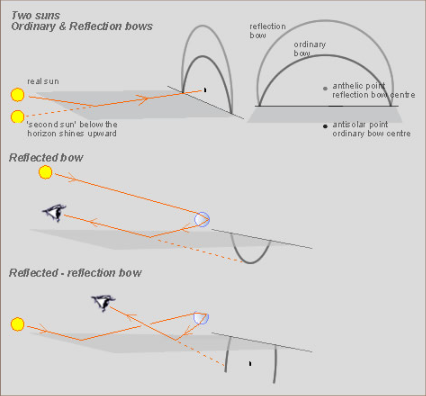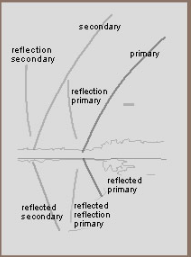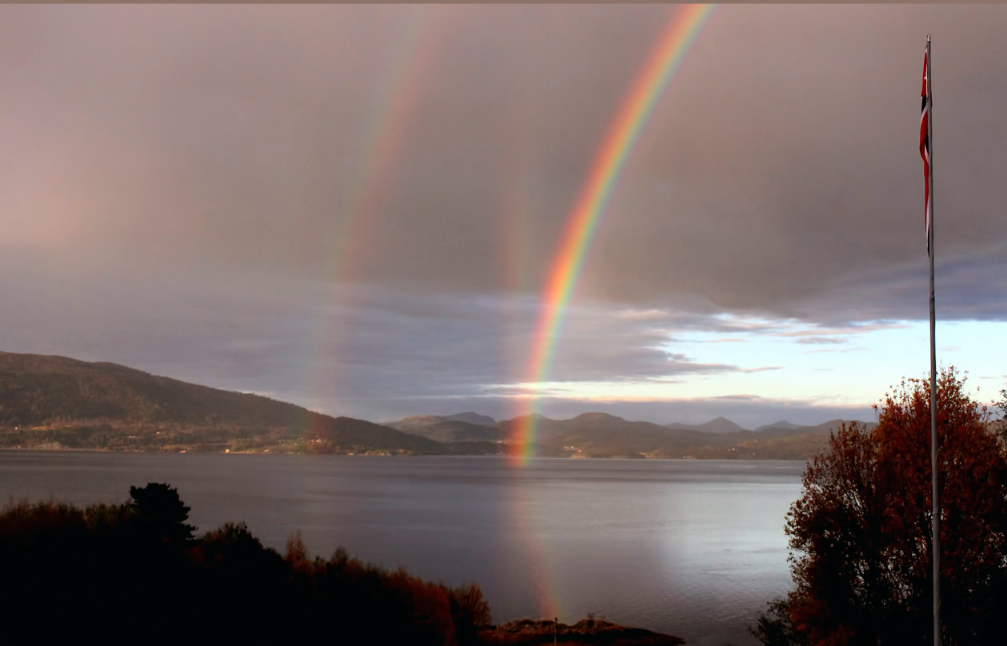Two Sun' Rainbows, Norway - OPOD
Two Sun' Rainbows, Norway - OPOD: A Spectacular Atmospheric Phenomenon
Have you ever witnessed a breathtaking atmospheric display that left you in awe? Imagine standing near the picturesque fjords of Norway and being treated to not just one, but two sun-like rainbows. This extraordinary event was captured by Torill Asmyhr at Torvikbukt/Ranem near Kristiansund, Norway. The photographs reveal not only the familiar primary and secondary rainbows but also a remarkable "2nd sun" bow in the sky and watery reflected bows.
The Formation of "Two Sun" Rainbows
The enchanting phenomenon of "two sun" rainbows is a result of sunlight reflecting off the calm waters of the fjord. As the rays of the sun hit the water's surface, they bounce back and form upward-going rays. These rays contribute to the formation of a third bow in the sky, often referred to as a "reflection bow." However, this term may not adequately capture the essence of this extraordinary phenomenon, as it involves the presence of two suns creating two distinct sets of rainbows.
Understanding Reflected-Reflection Bows
While bows in the water may appear to be reflections of the rainbows in the sky, they are actually formed by different raindrops. These raindrops reflect the rainbow light once from the water, creating what is known as "reflected-reflection bows." The process involves two reflections: first, the sun's light is reflected off the water, and then the rainbow rays themselves are reflected.
The Meeting Point
An intriguing aspect of this atmospheric spectacle is that all the bows, including their reflected counterparts, converge at the horizon. This convergence creates a mesmerizing visual effect where the rainbows seem to blend seamlessly with their reflections in the water.
A Visual Feast: Capturing the Moment
The photographs captured by Torill Asmyhr beautifully showcase the magnificence of this rare atmospheric event. The vibrant colors of the rainbows against the serene backdrop of the fjords create a truly captivating scene. Asmyhr's ability to capture the intricate details and play of light in the sky and water adds an extra layer of depth to the photographs, transporting viewers to the breathtaking landscapes of Norway.
The Wonder of Atmospheric Optics
Atmospheric optics is a fascinating field that explores the interaction between light and the Earth's atmosphere, giving rise to various optical phenomena. Rainbows, halos, and sundogs are just a few examples of these captivating displays. Each phenomenon has its unique characteristics, making them a subject of great interest for scientists and nature enthusiasts alike.
The Significance of "Two Sun" Rainbows
While "two sun" rainbows may be a rare occurrence, they serve as a reminder of the complexity and beauty of the natural world. These ethereal rainbows offer a glimpse into the intricate workings of light and water, showcasing how they can come together to create awe-inspiring displays. Studying such phenomena not only deepens our understanding of the physics behind them but also enhances our appreciation for the wonders that surround us.
Conclusion
The appearance of "two sun" rainbows in Norway is an extraordinary event that captivates both the eye and the imagination. The interplay between sunlight, water, and reflection creates a visual feast for those fortunate enough to witness it. Asmyhr's photographs serve as a testament to the enchanting beauty found in nature's most intricate displays. By exploring atmospheric optics and delving into the science behind these phenomena, we gain a deeper appreciation for the wonders that unfold above us every day.

"Two Sun" Rainbows
A scene by Torill Asmyhr at Torvikbukt/Ranem near Kristiansund, Norway. Added to bright primary and secondary bows are a "2nd sun" bow in the sky and watery reflected bows.
Images ©Torill Asmyhr, shown with permission

Sunlight reflects off the fjord waters to form upward going rays. These made the third bow in the sky - a 'reflection bow'. It might be better called a '2nd sun bow' because effectively two suns are shining to make two separate sets of rainbows.
Bows in the water are not, strictly speaking, reflections of skyward bows. They are formed by different raindrops whose rainbow light is reflected once from the water.
'Reflected - reflection bows' involve two reflections. the sun is first reflected and then the rainbow rays themselves.

All the bows meet their reflected counterparts at the horizon.

Note: this article has been automatically converted from the old site and may not appear as intended. You can find the original article here.
Reference Atmospheric Optics
If you use any of the definitions, information, or data presented on Atmospheric Optics, please copy the link or reference below to properly credit us as the reference source. Thank you!
-
<a href="https://atoptics.co.uk/blog/two-sun-rainbows-norway-opod/">Two Sun' Rainbows, Norway - OPOD</a>
-
"Two Sun' Rainbows, Norway - OPOD". Atmospheric Optics. Accessed on November 26, 2024. https://atoptics.co.uk/blog/two-sun-rainbows-norway-opod/.
-
"Two Sun' Rainbows, Norway - OPOD". Atmospheric Optics, https://atoptics.co.uk/blog/two-sun-rainbows-norway-opod/. Accessed 26 November, 2024
-
Two Sun' Rainbows, Norway - OPOD. Atmospheric Optics. Retrieved from https://atoptics.co.uk/blog/two-sun-rainbows-norway-opod/.